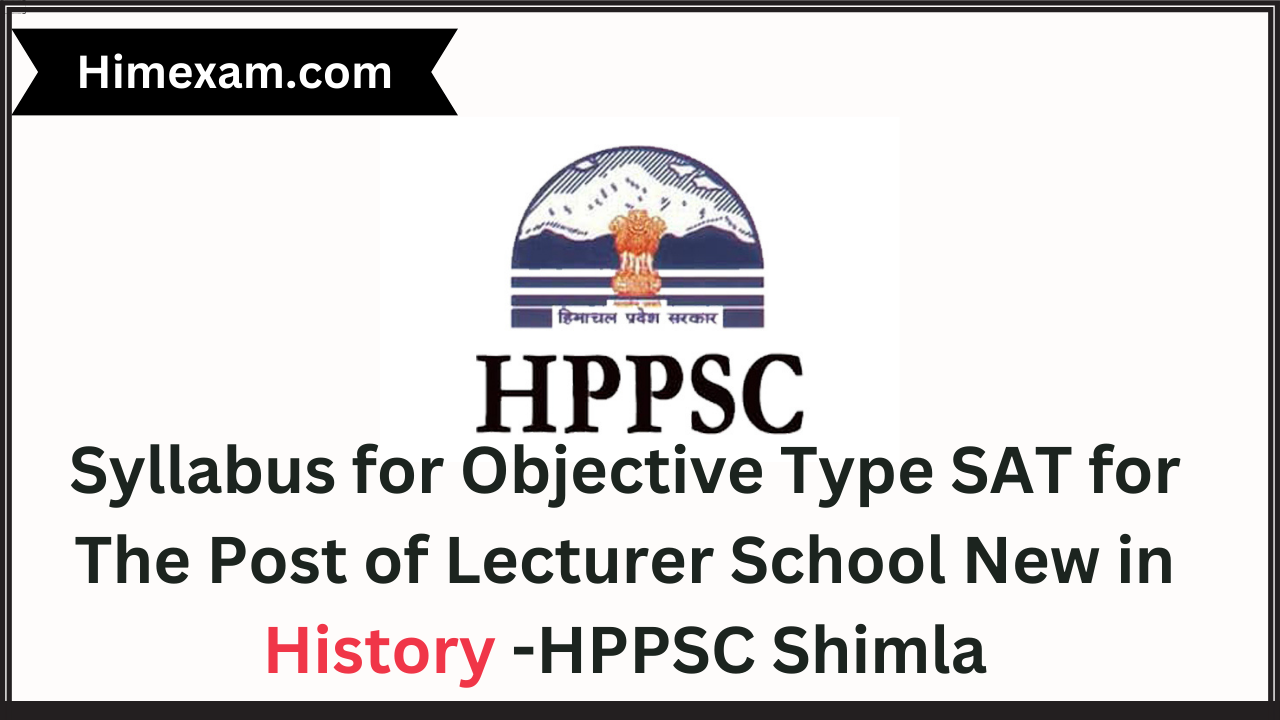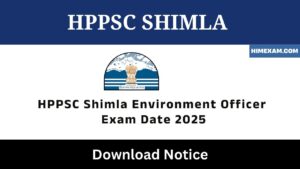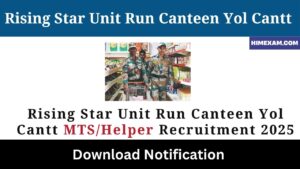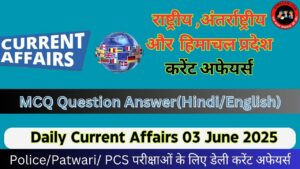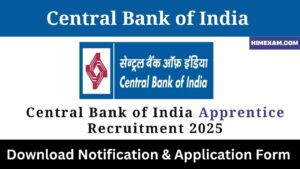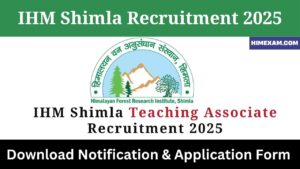Syllabus for Objective Type SAT for The Post of Lecturer School New in History -HPPSC Shimla
SYLLABUS FOR OBJECTIVE TYPE SUBJECT APTITUDE TEST (SAT) FOR RECRUITMENT TO POSTS OF LECTURER (SCHOOL NEW) IN HISTORY, CLASS-III IN THE DEPARTMENT OF HIGHER EDUCATION. THIS PAPER WILL BE OF 02 HOURS DURATION OF 100 MARKS. THE OBJECTIVE TYPE SUBJECT APTITUDE TEST (SAT) SHALL COVER FOLLOWING TOPICS
Syllabus for Objective Type SAT for The Post of Lecturer School New in History -HPPSC Shimla
PART-I (Subject) 80 marks
1.A study of Ancient World Civilization: –
The Harappan Civilization: Origin and extent, Town Planning, artistic achievements, industries and crafts, external and internal trade, social and religious life; The cadre of Civilization in the Nile Valley: The Pharaohs, social and economic life; art and architecture, the legacy of the Egyptian civilization; Roots of Mesopotamian Civilization from the Sumerian to the Persian conquest; the nature of the state, occupation and crafts, trade and commerce, Hammurabi’s law code of Babylonia and intellectual achievements; the elements of Greek Civilization: the evolution of the city-states (Polis), Athens and Sparta, Pericles, intellectual thoughts and culture, characteristics of Greek art, Alexnder and the Hellenistic Civilization, economic and social life, literature, art and science; The Roman Civilization: The nature of monarchy, senate and assembly in the 7thcentury BC, the Punic wars and their effects upon Rome, society and culture during the republican era, Foreign Trade, Economy and Urban Settlements, artistic achievements, the fall of Rome empire; The emergence of Civilization in China: Cultural development during the Shang Dynasty, cultural progress under the Chou and Han dynasty, Confucianism and his legacy, Buddhism and Buddhist art in China.
2. Ancient Indian Archaeology: – Geographical factors and their impact on human settlement in the Indian Subcontinent; Introduction to Indian archaeology: origins and beginning of archaeology as a distinct discipline, nature of archaeological data andarchaeological exploration; Principles and methods of archaeological excavations: types and methods of excavation recording and methods of dating; Insight into the prehistory of Indian sub-continent: Paleolithic and Mesolithic cultures; beginning of food-production, habitation and making of pottery during the Neolithic culture; Principal archaeological sites: Harappa, Mohenjo Daro, Lothal, Kalibangan, Atranjikhera, Hastinapur, Brahmagiri and Arikamedu; Pottery Traditions: Harappan, Ochre coloured Potter (OCP), Painted Grey Ware (PGW) and Northern Black Polished Ware (NBPW), potteries in upper Deccan region; Numismatic: significance and limitation of numismatic evidence, origin and antiquity of coinage in India, technique of making coins, punch-marked coins, Indo-Greek coins, coins of the tribal Janapadas, Satavahana coins, Gupta coins; Epigraphy: historical value of epigraphic evidence, types of inscriptional evidence and materials used for epigraphs, origin and development of Mauryan Brahmi script; Beginning of the iron age and its impact on settlement pattern: emergence of political states in different areas of the sub-continent.
3. History of India (320 BC- 750AD): – The Mauryas, The Shungas and Kanvas, The Indo-Greeks, The Indo-Scythians and the Satavahanas, The Kushanas, The Guptas, The Vakatakas, Harshavardhana, The Maukharis and the Later Guptas, The early history of south India, The Chalukya, Pallava and Panddya conflicts, The early history of Kashmir and western Himalayan States.
4. History of India (750AD -1200AD): – The Gurjara Pratiharas, The Palas, The Rastrakutas, The Paramaras, The Chalukyas, The Chandelas, The Chahamanas, The Gahadavalas, The Cholas, The Yadavas of Devagiri.
5. Political Concepts and institutional structures in India (1500 BC to 1200AD): – Interpretations and Approaches of Ancient Indian Polity; The State in Ancient India: Origins and Functions; Vedic Polity: Early and Later Vedic Periods, SabhaandSamitiandVidatha; PostVedic Polity: Saptanga Theory of the State, Origin of kingship, ministry, Mandal theory, republics; the Mauryan administration, the Kushana polity, The Gupta administration and its aftermath, Early Medieval Indian Polity and the Concept of Feudalism, local self-government in the Chola administration; The system of Taxation and its Legitimacy.
6. Aspects of Religion, Art and Architecture in Ancient India: – Early Indian Religions: Vedic and Post-Vedic periods, Social and Economic Roots of Buddhism and Jainism, Growth of Bhakti cults: Saivism, Vaishnavism and Shaktism; The Spirit of Indian Art, Early Rock-Curt temples: Hinayana Phase & Mahayana Phase, Vastupurushamandala in Indian Temple Architecture, Salient features of the Gupta Temple Architecture, The emergence of Regional schools of Architecture, Nagara style: a study of Khajuraho and the Sun temple, Konarak temple, Vesara style: The Durga Temple, Aihole, Dravida style: Temples at Mamallapuram (Mahabalipuram) and the Brihadishevara temple, Tanjore; Schools of early Indian Sculpture: Mauryan, Shunga-Satavahana, Mathura school and Gandhara school, The emergence of the classical Gupta style and its regional ramifications; Prehistoric rock paintings, mural paintings with special reference to Ajanta: Patrons and Artists.
7. Political History of India (1205 AD – 1526 AD): – Major Sources: Ziauddin Barani, Tarikh-i-Firuz Shahi, Amir Khusrau, Qiran-us-Sadain and Khazain-ul-Futuh; Yayha ibn Ahmad Sirhindi, Tarikh-i-Mubarak Shahi, Political conditions and events in India during the Ghorian invasion, Establishment of Turkish rule in India: Iltutmish and Balban, The changing nature, composition and role of the nobility under the Ilbaris, Khaljis and Tughlaqs, The Mongol problem and the north-western frontier, Khaljis: centralisaiton, administrative and economic reforms and imperialist expansion, Tughlaqs: Adminsitrative changes, agrarian policies and rebellions, Afgan Polity: Sultanate under the Lodis, Rise of regional kingdoms in south India: Bahamani and Vijaynagar, The disintegration of the Mughal Empire and the rise of autonomous states: Bengal, Awadh, the Decan, The growth of new polities and powers: Sikhs, Marathas, Jatas and Rohillas, The Anglo-French conflict, Anglo-Maratha relations and the destruction of Maratha power, The British conquest of Bengal, British relations with Awadh, British relations with Hyderabad and Karanataka, Anglo-Mysore relations and the subjugation of Mysore, Annexation of Punjab and Sindh, British-Indian relations with neighbouring countries: Nepal, Burma and Afghanistan, the method and nature of the residency system and the ‘ doctrine of lapse’.
8. Political History of India (1526AD -1605 AD): – Major Sources: Baburnama; Gulbadan Begum, Humayun Namah; Abbas Khan Sarwani, Taikhi-Sher Shahi; Abul Fazl, Akbarnama and Ain-i-Akbari; Abdul Qadir Badaoni, Muntakhab-utTawarikh, Political conditions in north India on the eve of Babur’s invasion, Babur: relation with the Afghans and Rajputs, and his territorial arrangements, Humayun: contest for supremacy with the Afghans and relations with his brothers and the nobility, Sher Shah: administrative and revenue measures, the nature of the Afghan state, Mughal restoration: the period of regency, Akbar’s assertion of sovereign authority and relations with the nobility, Akbar’s policy towards subordinate hereditary chieftaincies with special reference to Rajasthan, Mughals and the N.W. Frontier: Safavids, Uzbeks and the Afghan tribes, conquest of western and northern regions, Mughals and the Deccan: policy, conquests and accomplishments, Akbar’s socio-religious concepts: ibadatkhana, mahzarnama, tauhid-i-Ilahi, chahar martaba-I akhlaq, wahdat-ul wujud, sulh-i kul.
9. Political History of India (1605 AD-1707 AD): – Major Sources: Tuzuk-i-Jahangiri written by Jahangir; Badshah Nama of Muhammad Amin Qazviniand Abdul Hamid Lahori; Amal-I Salih of Muhammad Saleh Kamboh;Alamgir Namaof Muhammad Qazim; Maásir-I Alamgiri of Saqi Mustaid Khan; Royal rebels and contests for the throne: rebellions of Salim, Khusrau and Shahajahan, War of succession (1658 AD), Mughal-Rajput relations under Jahangir, Shahjahan and Aurangzeb, Mughals and the Deccan states during the reigns of Jahangir, Shahjahan and Aurangzeb, Mughal relations with Safavids and Uzbeks, Court politics and the Mughal nobility, Nurjahan, composition and rebellions of the nobility, Mughal-Maratha relations; Armed uprising: Jats, Satnamis and Sikhs, Mughal state and its attitude towards Muslims orthodoxy and non-Muslims under Jahangir, Shahajahan and Aurangzeb; The declineof Mughal empire: military failures, agrarian and jagirdari crises, transformation of administrative institutions, growing importance of regional economics and politics.
10. Institutional and Administrative structure of British Raj: – Administrative structure and functioning of East India Company in Bengal (1765-1772); modes of political control: Regulating Act of 1773 and Pitt’s India Act of 1784, Evolution of central and provincial structure through renewal of Company’s Charter Acts from 1793 to 1853; Transfer of Indian governance from Company to Crown: 1858 Act and Queen’s Proclamation; Towards representative government: Indian Councils Act of 1861 to Morley-Minto Reforms of 1909, Montague Chelmsford Reforms 1919, Government of India Act 1935; Administration: Civil service, Police, Judiciary and local self-government, factors leading to the partition of Indian and the India Independence Act 1947.
11. History of the Indian Independence Struggle: – Indian resistance to British rule: revolt of 1857-causes, course, nature and impact; Evolution of modern and associational politics, political mobilization through organized politics; emergence of Indian National Congress: confrontation and collaboration of the Moderates and Extremists, From Swadeshi to Home Rule Movement, extremist challenge to British repression: partition of Bengal 1905, Swadeshi Movement, Home Rule League, Gandhian Movements: Khilafat and Non-cooperation Movement and the Civil Disobedience Movement, Swarajists’first attempts at constitution making, formation of the Swaraj Party, Nehru Report 1928, Radical alternative, a study of the socialist and the communist movement, the Muslim League, politics of separatism and the two-nation theory, Cripps proposal and the Quit India Movement, The Cabinet Mission Plan, Constituent Assembly, Interim Government and the Mountbatten Plan.
12. History of Himachal Pradesh from Ancient Times to 1971: – Concept and scope of regional history, Pre and Proto history of Himachal Pradesh; Tribalism to state formation: tribes, castes and clans; The emergence and nature of early medieval states: Kangra, Chamba, Kullu; Socio-economic conditions, Political consolidation and socioeconomic conditions among the Hill states during the medieval period; Hill States and the external powers: relations with the Delhi Sultans, Mughals, Sikh chiefs and Ranjit Singh; The Gorkha invasion: nature, process of repulsion and consequences; Himachal under the British: penetration of colonial power, British political and administrative policy, the begar question, relations with princely states, rise of cantonments; popular protest in Himachal Pradesh from 1848-1948: special reference to Praja Mandal movement; the emergence of modern Himachal: political developments from 1947-71, Social and economic developments from l947-71, artistic and cultural heritage: temple styles, Buddhist architecture, major sculptural styles, schools of Pahari painting.
13. Post Independence History of India (1947-77): – Rehabilitation after partition: refugee problem, integration of princely states, the Constitution of India and its evolution; Structure of governance: bureaucracy, police and the judiciary; National integration: integration of princely states, reorganization of Indian states, the language question; Parties and Politics: Indian National Congress, other national parties, left and right wing parties and major regional parties; Electoral System: Major trends in national general elections 1951-77; Economic policies and trends of development: concept of mixed economy, process of planning, trends in economic development through Five Year Plans, policy and process of nationalization; India’s foreign policy: major trends with special reference to Pakistan, China, Soviet Union and USA.
Part-II (B.Ed. portion) 20 marks
Foundation of Education System
- Concept and Nature of Knowledge, Knowledge Acquiring Process.
- Indian Knowledge System; Vedic Education System, Buddhist Education System
- Concept of Education; Meaning, Nature, Modes of Education, Objectives of Education,
- Approaches to Education.
- Philosophical, Psychological, Sociological and Technological Basis of Education
- (Meaning and Needs)
- Concept of important Variables: Personality, Intelligence, Creativity, Academic
- Achievement, Problem Solving Ability
Teacher Education and Related Aspects:-
- Concept of Teacher Education, Historical Aspects of Teacher Education in India, Scope of Teacher Education, Types and Levels of Teacher Education Programmes.
- Teacher and Teaching related Concepts, Learner and Learning Related Concepts,
- Relation between Teaching and Learning, Learning Environment, Pillars of Learning.
- Challenges in the field of Teacher Education (Discussion with reference to NEP 2020 also)
Pedagogy and Teaching Learning Experiences:-
- Communication Skills and its Use
- Models of Teaching; Advance organizer, Concept Attainment, Information Processing, Inquiry Training
- Methods of Teaching
- Preparation and Use of Teaching Learning Material
Information Technology in Teaching Learning Process
- ICT; Its meaning and use in Teaching Learning Process
- Concept of Open Educational Resources, SWAYAM and MOOCs
- Digital Initiatives in School Education by Government of India
More Pages:-
हेलो दोस्तों ,आपका हमारी वेबसाइट Himexam.com पर स्वागत है। जैसा की आपको पता है हमारी वेबसाइट Himexam.com आपको समय-समय पर सभी HP Govt Jobs & All India Govt Jobs की Notifications प्रदान करवाती है। साथ ही साथ Himachal Pradesh Exam Previous Paper और Himachal Pradesh GK ,Himachal Pradesh & National +International Current Affairs के सभी नोट्स मुफ्त उपलब्ध करवाते है। हमारी वेबसाइट के अलग अलग प्लेटफार्म पर pages & Group बने है जैसे की facebook ,Telegram और Instagram .. अगर आप हिमाचल के किसी भी पेपर की तैयारी कर रहे हो तो जल्दी से इन groups के साथ जुड़ जाएं इनके लिंक नीचे table में दिए गए है।
Join Us:-
| Like Our Facebook Page | Click here |
| Join Us oN Telegram | Click here |
| Join Us On Instagram | Click Here |

